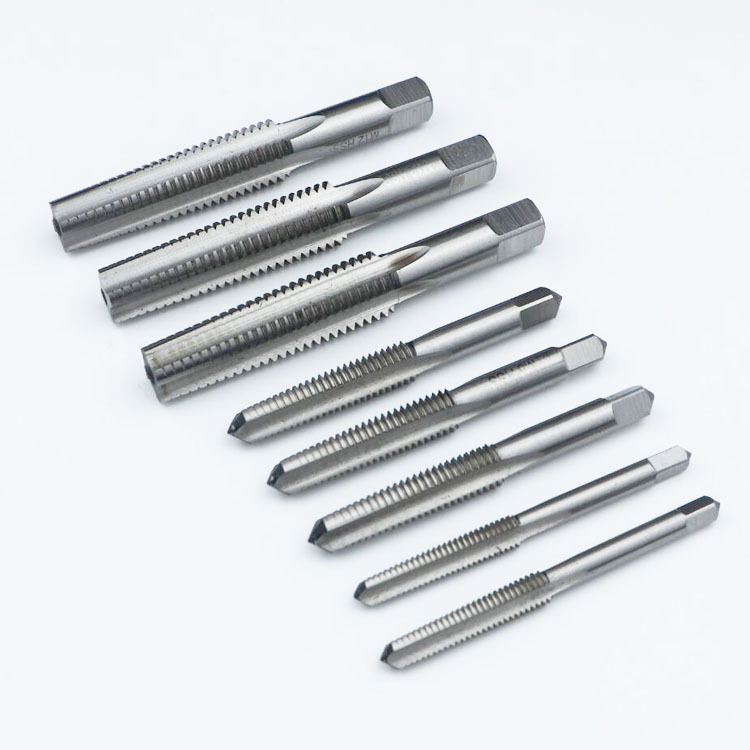1. The tap quality is not good
Main materials, CNC tool design, heat treatment, machining accuracy, coating quality, etc. For example, the size difference at the transition of the tap cross-section is too large or the transition fillet is not designed to cause stress concentration, and it is easy to break at the stress concentration during use. The cross-section transition at the junction of the shank and the blade is too close to the weld, resulting in the superposition of complex welding stress and the stress concentration at the cross-section transition, resulting in a large stress concentration, which causes the tap to break during use. For example, improper heat treatment process. When the tap is heat treated, if it is not preheated before quenching and heating, quenching is overheated or over-burned, not tempered in time and cleaned too early, it may cause cracks in the tap. To a large extent, this is also an important reason why the overall performance of domestic taps is not as good as that of imported taps.
Countermeasures: Choose high-quality and reliable tap brands and more suitable tap series.
2. Improper selection of taps
For tapping parts with too much hardness, high-quality taps should be used, such as cobalt-containing high-speed steel taps, carbide taps, coated taps, etc. In addition, different tap designs are used in different work situations. For example, the number, size, angle, etc. of the chip flute heads of the tap have an impact on the chip removal performance.
For difficult-to-machine materials such as precipitation stainless steel and high-temperature alloys with high hardness and good toughness, the tap may break due to its insufficient strength and cannot resist the cutting resistance of tapping processing.
In addition, the problem of the mismatch between the tap and the processing material has been paid more and more attention in recent years. In the past, domestic manufacturers always thought that imported products were better and more expensive, but they were actually suitable. With the continuous increase of new materials and difficult processing, in order to meet this demand, the variety of tool materials is also increasing. This requires selecting a suitable tap product before tapping.
Countermeasures: Use high-strength material taps (such as powdered high-temperature steel, etc.) to improve the strength of the tap itself; at the same time, improve the surface coating of the tap to improve the surface hardness of the thread; in extreme cases, even manual tapping may be a feasible method.

3. Excessive wear of the tap
After the tap is processed several threaded holes, the cutting resistance increases due to the excessive wear of the tap, resulting in the tap being broken.
Countermeasures: The use of high-quality tapping lubricating oil can also effectively delay the wear of the tap; in addition, the use of the thread gauge (T/Z) can easily judge the condition of the tap.
4. Difficulty in chip breaking and chip removal
For blind hole tapping, a spiral groove rear chip removal tap is usually used. If the iron chips are wrapped around the tap and cannot be discharged smoothly, the tap will be blocked, and a large number of processed materials (such as steel and stainless steel and high-temperature alloys, etc.) are tapped. Machining is often difficult to break chips.
Countermeasures: first consider changing the helix angle of the tap (usually there are several different helix angles to choose from), try to make the iron filings be removed smoothly; at the same time, adjust the cutting parameters appropriately, the purpose is to ensure that the iron filings can be removed smoothly; if necessary Variable helix angle taps can be selected to ensure smooth discharge of iron filings.
Post time: Jul-12-2022


